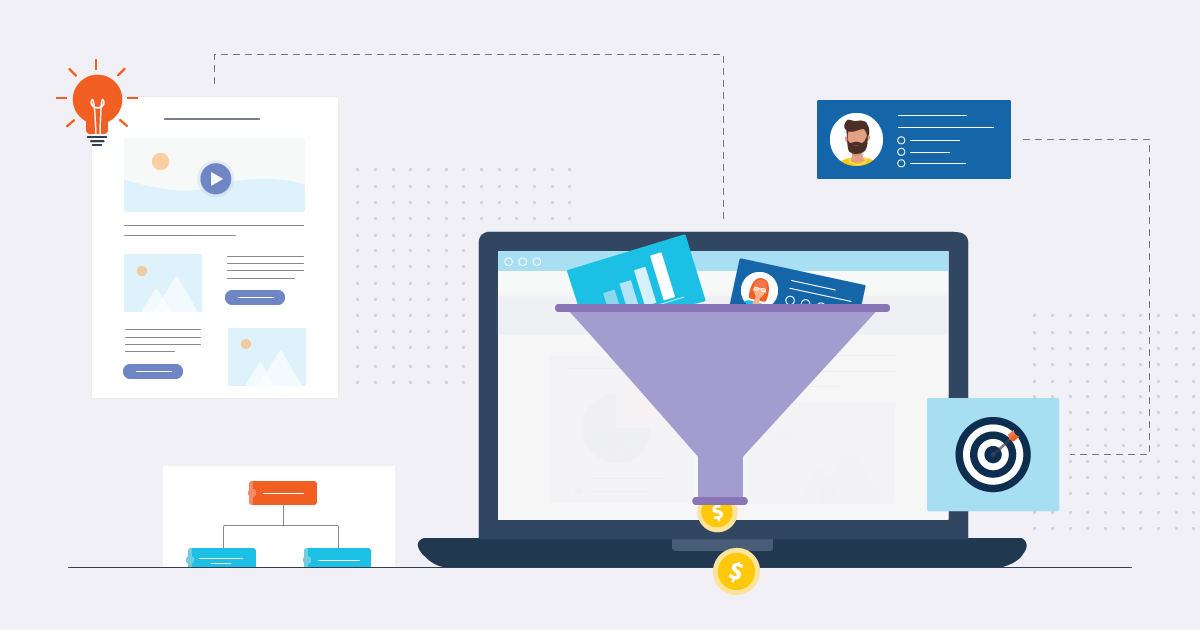
Targeted Email Marketing: Benefits, Examples & Best Practices
Today’s customers want to receive personalized emails since they’re looking for relevant information in exchange for their interest, meaning they won’t invest their time in a brand that sends the same generic and impersonal message every single day.
Companies that do that risk a blow to their reputation and an increase in unsubscribe rates. Today, we’re here to help you avoid any alarming scenarios through the power of targeted email marketing.
Read on to discover how to hit the bull’s eye when it comes to creating email campaigns that increase your conversion rates, and craft unique experiences for your clients.
What Is Targeted Email Marketing?
Targeted email marketing is a method for sending tailored email campaigns to subscribers based on specific metrics, such as interests, purchase history, behaviors, demographics, etc.
The purpose of this type of email marketing strategy is to ensure your emails make a good first impression and stand out in subscriber inboxes. It goes hand in hand with email marketing segmentation, which aims to divide your email lists into different segments based on these characteristics.
Targeted emails & segmentation
By segmenting your subscribers, you can better understand who the people you want to reach are, so you can target them with relevant content and meet their needs.
For example, you may have noticed that people between the ages of 20 and 30 respond best to videos, so you could send more emails to these people with links to videos on topics that interest them.
In a nutshell, you target customers. 🎯
But why should you do so? Why is segmenting your list and sending more personalized emails so important, and why you should always use it when creating targeted campaigns?
Let’s explore the benefits of targeted emails in the next section to answer all these questions.
Benefits of Targeted Email Marketing
According to Gartner, email is the best-performing marketing channel, with 16% of marketers using it to engage consumers. And its use will continue to grow in the future.
But when you send the same promotional email about your new product or offer to every person on your list, you might not get your desired responses and results.
This practice is called email blasting, and while it’s a simple way to maximize your reach, you might end up losing customers.
However, when you invest in targeted email marketing campaigns, they’ll yield the following benefits:

How about we explore them in greater detail for a few moments?
Increased conversion rates
When you focus on sending your target audience relevant messages with personalized content, it should be no surprise that your customers engage more with them.
The result? Higher conversion rates.
According to Barilliance, the average email conversion rate in 2021 was 1.33%, achieved through triggered email campaigns such as ca.
rt abandonment.
People will flock to your brand if they’re engaged, and more and more will perform the desired action when interacting with your email.
This is advantageous when measuring the success of your email campaigns since it provides information you can later use to set expectations and improve your future efforts.
Higher ROI
The more targeted your campaigns are, the more return on investment (ROI) you’ll get.
And we’re not just saying that, as the numbers speak for themselves. A study by IBM found that personalization increases the average revenue per user by 166%.
When you understand customer preferences and know which product they’re interested in, you can target them with discounts and offers that appeal to them so you can deliver the right message at the right time.
By sending them personalized emails that cater to their interests and needs, your potential customers will be more engaged.
Naturally, taking into account the numbers mentioned above, as more engaged people convert, your revenue will increase.
Improved customer engagement
Whether you’re a small business or an e-commerce company, showing your customers that they’re more than just a number is necessary if you want to build a fruitful customer relationship.
So, if you send relevant emails at specific times—when your audience is more likely to engage—you’ll successfully drive more conversions and have them perform the action you want them to take.
Moreover, through personalized campaigns, you show new customers that you care about their needs and interests, which builds more trust in your brand.
Enhanced relevancy
Let’s say you’re an e-commerce business that sells shoes. One of your clients put a product in their shopping cart but forgot to complete their purchase.
You want them to buy it, so you could send them an abandoned cart email, which reminds the customer that they still have a product in their cart—and prompts them to make the purchase.
It’s one surefire way to ensure you send relevant emails that increase email open rates.
So, sending content based on their interest and activity makes customers more likely to engage with your emails as they’re relevant to their goals and appeal to them.
Increased retention
When you successfully give your clients what they want, when they want it, they’ll come back for more.
So, in the long run, targeted emails will enhance your email marketing efforts, as loyal customers will stay with your brand because they trust you.
As a result, creating personalized emails results in repeat purchases and stellar recommendations.
With the benefits of targeted email marketing fresh in your mind, let’s now look at how to create effective targeted campaigns step by step.
How To Create A Targeted Email Campaign
In this practical section of the article, we’ll discuss the essential steps you must take to create successful targeted email campaigns.
Before we dive deep into them, here’s an overview of what you need to do:

1. Choose the right email marketing software
Targeted marketing without email marketing software is like catching fish with your bare hands.
But we get it—with the abundance of email marketing solutions available, it’s no wonder choosing one makes your head spin.
To find the right one, first, consider your needs: do you really need all the features the software provides, or can you make do with only a few functions such as popups?
After discovering what your business requires, you should look for email marketing services that have the following capabilities:
- Free plan or trial option
- Rich email template library
- Various personalization features
- List segmentation through email tagging or scoring
- A/B testing for email subject lines
- Subscription forms
- Integration with your website, customer relationship management (CRM) database, etc.
Luckily, Moosend is an email marketing tool that ticks all the boxes! ✅

2. Collate all your customer data in one place
Without data, you can’t create targeted campaigns properly.
Therefore, you should collect customer information in one central database, without spreading it all over the company on many different devices.
To design effective targeted email marketing campaigns, you need to have all customer data—from activity level to gender or birth date—in a single system.
To ensure the data is accurate and current, here are some best practices for maintaining data hygiene:
- Regularly keep data clean by auditing it for consistency through user behavior metrics like click-through rates and periodic surveys.
- Delete any unnecessary or outdated data.
- Properly store data and establish a single source of truth.
- Automate processes such as archiving, workflows, or backups.
- Choose a user-friendly analytics tool.
3. Segment your audience
To successfully create targeted email campaigns, you need to understand how your audience spends their time so you can target the right user with the right message.
Customers have shared characteristics you can use to define and segment your email list in greater depth.
Some of the various criteria for segmentation include:
- Demographics—You segment your audience based on gender, age, ethnicity, education level, etc.
- Behavior—Segmentation based on interests, social media usage, and how users interact with your brand.
- Purchase history—You divide customers into groups based on past buying behavior and collect transactional data, including what, when, and how much they bought.
- Geography—Mostly refers to users across different locations and time zones, so you can send emails when they’re most active.
- Lifecycle—Target your audience based on where they are in the sales funnel, such as new users or inactive clients.
There are a hundred different ways to segment your audience. If you want, you can even divide your list by values and attitudes—the world’s your oyster!
On the other hand, if you don’t know who your target audience is, it helps to build customer personas (or buyer personas), which are fictional representations of your worst or ideal client.
Or, to get rid of all the hassle, you can streamline your email segmentation with Moosend.
Moosend has advanced segmentation features that break your lists up into endless segments based on any criteria you want, so you can get up close and personal with your clients.
4. Create email content and visuals for each segment
Your copy is not all that matters in an email.
Visuals are equally important because they carry your brand’s message and help increase awareness. Plus, turning subscribers into buying customers is easier because you successfully engage them through the design elements.
So, you need to add images that interest your target audience based on the criteria you set, or craft dynamic images that display correctly on various mobile devices.
Let’s take a look at this example by Zero Acre:
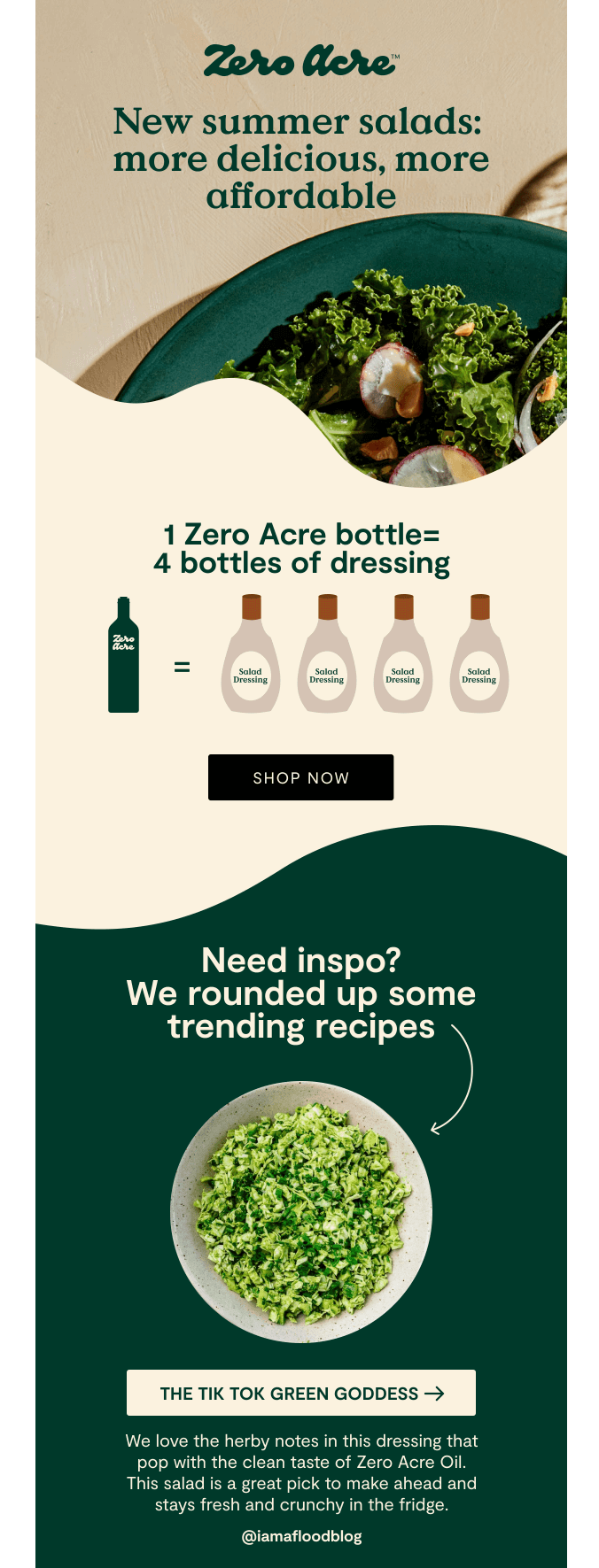
You can guess what audience this email caters to by looking at the design. This email targets younger and active people who want healthier lifestyles. To further engage the target audience, Zero Acre added trending salad recipes to compel them to make a purchase.
Here are some tips for creating riveting visual content marketing that increases customer retention:
- Select on-brand images that tell your story.
- Use quality images, but invest more in custom photos that tell your brand’s story rather than relying on stock images.
- Don’t use too many images, as they’ll become a distraction rather than inviting users to perform an action.
5. Personalize the content
When you see an email in your inbox starting with, “Hey, Jin! We’ve got a gift for you!” you’re bound to open it as you’re curious to see what present you’ve received.
This is how email personalization works.
While you can customize other aspects of your email aside from the subject line, like design and copy, putting your recipient’s first name in the subject line is the oldest trick in the book.

This is an easy way to engage them and shows you care enough about your subscribers to know their names. Moreover, it adds a personal touch to your emails, increasing conversion rates and nurturing brand loyalty.
That’s why email personalization is so vital to your campaigns.
Emails are more likely to grab the attention of your subscribers and stand out in their inbox. By personalizing every email, you also increase your email open rate as your subscribers will want to read your newsletters.
Now let’s focus on subject lines and how to make them engaging:
- Keep them concise, between 6 and 10 words.
- Use simple and clear language.
- Create a sense of urgency.
- Avoid spam words.
Another way to engage users is to send emails advertising products based on past behavior.
For instance, if you’ve seen someone eyeing headphones, they might be interested in similar products. So, send them an email with your options!
At the end of the day, what you need to do is match individual preferences with your content so you create the best customer lifecycle.
6. A/B test your emails
Your emails are ready, but you’re unsure whether they’re good enough to send; so you need to test them first.
And we don’t mean sending your copy to your marketing team and asking them what they think. They might like it, but your recipients won’t, and you’ll only hinder your marketing efforts.
No, we’re talking about A/B testing—which compares two types of an email subject line, sender name, email content, design, and send time, and see which performs better.
You select the winner based on which version yields higher open rates or better click-through rates. Later, you can send the winning option to the rest of your subscribers.
For example, let’s say you want to test the email’s subject line as you have two good options but you don’t know which one will work best.
Through A/B testing, you can see which version gets you more clicks, so you’ll know to use that one for future campaigns.
While many businesses ignore A/B testing, it’s extremely valuable for those who invest in such a tool.
You can be one of the companies that succeeds by choosing Moosend. ✨

Through Moosend’s A/B testing features, you can easily test two versions of a subject line or email copy and get the desired results.
To see more tools—and how Moosend performs—take a look at this article.
7. Set up email automation
Do you know what email automation feels like?
It’s like learning to ride a bike, and when, for the first time, you let go of the handlebar and yell at the top of your lungs, “Look Mom, no hands!”
Email automation is just like that, allowing you to take a step back and enjoy watching your conversions and profits increase.
Instead of manually crafting every single email campaign—which is simply not sustainable if you want to keep up—use a robust tool to create an optimized experience for your customers.
Plus, it helps you deliver personalized campaigns that convert your audience into loyal customers.
But what exactly is email automation?

It’s the process of using automated email messages that you send to your subscribers when they perform an action, mostly based on specific triggers or an elapsed amount of time.
For instance, it’s beneficial in cart abandonment campaigns.
When a user hasn’t completed the purchase, the tool will automatically send an email encouraging them to buy their forgotten product.
Author’s Tip: For more examples, try this article.
When it comes to selecting your email automation tool, you need to keep in mind four things:
- Usability—it needs to be user-friendly with a minimal learning curve.
- Automation features—self-explanatory. The tool needs to come with email newsletter templates, ready-made automation tools, or audience segmentation features.
- Pricing—you don’t want the tool to make a dent in your budget, so choose an affordable solution with the features you truly need.
- Integrations—the tool needs to have the ability to integrate with your favorite apps.
And guess who does it all? Yep, it’s Moosend!
Sign up for a free Moosend account today to see its performance—and how it’ll revolutionize your email marketing campaigns.
8. Track and analyze campaign performance
You’ve sent all your emails to all the people on your list. Now, you can lean back and enjoy the fruits of your labor.
Except, that’s not true. Your job doesn’t end here, as you still need to monitor and track the effectiveness of your campaigns.
The last step in any targeted email campaign is to measure whether your emails work as intended. By doing so, you can see how your campaign performs and identify areas for improvement.
Some metrics you need to keep track of are as follows:
- Click-through rate—Measures the number of people who clicked on a link in the email so you can see how many are engaging with your content.
- Conversion rate—Focuses on people who clicked on a link and then performed the desired action, such as subscribing to the newsletter.
- Bounce rate—The number of emails that fail to reach the recipient’s inbox.
- Return on investment (ROI)—As the name suggests, it tracks the total revenue generated and divided by total spending.
- Open rate—This metric shows how many recipients opened a given email.
- Unsubscribe rate—Through this metric, you can see how many email recipients unsubscribed from your list after opening an email.
A good email service provider—like Moosend—has robust reporting and analytics capabilities that you can use to evaluate the effectiveness of your targeted email marketing campaigns.
You also gain a bird’s eye view of your campaigns so you can make more accurate business decisions.
Ready to Create a New Targeted Email Marketing Campaign?
Personalization is the bread and butter of your targeted email campaigns.
Without it, you’re left with a dry piece of bread that no one wants to eat. But you don’t have to do this on your own.
Moosend is here for you—and is ready to offer the expertise and tools you need to craft the email campaigns of your dreams. Plus, it has advanced email segmentation features that save you time and effort.
No need to be shy; register for free now to benefit from Moosend’s features.
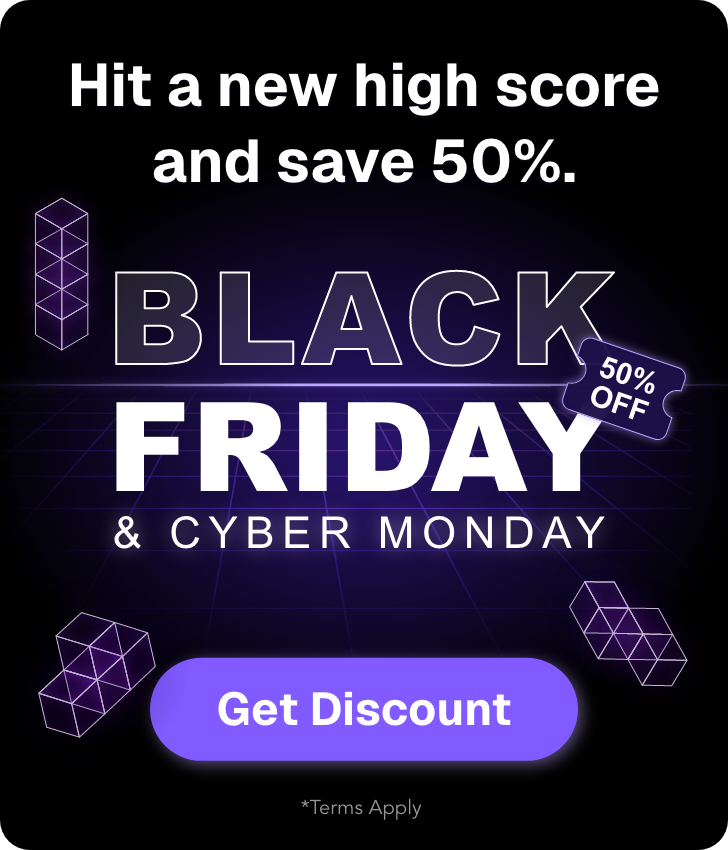

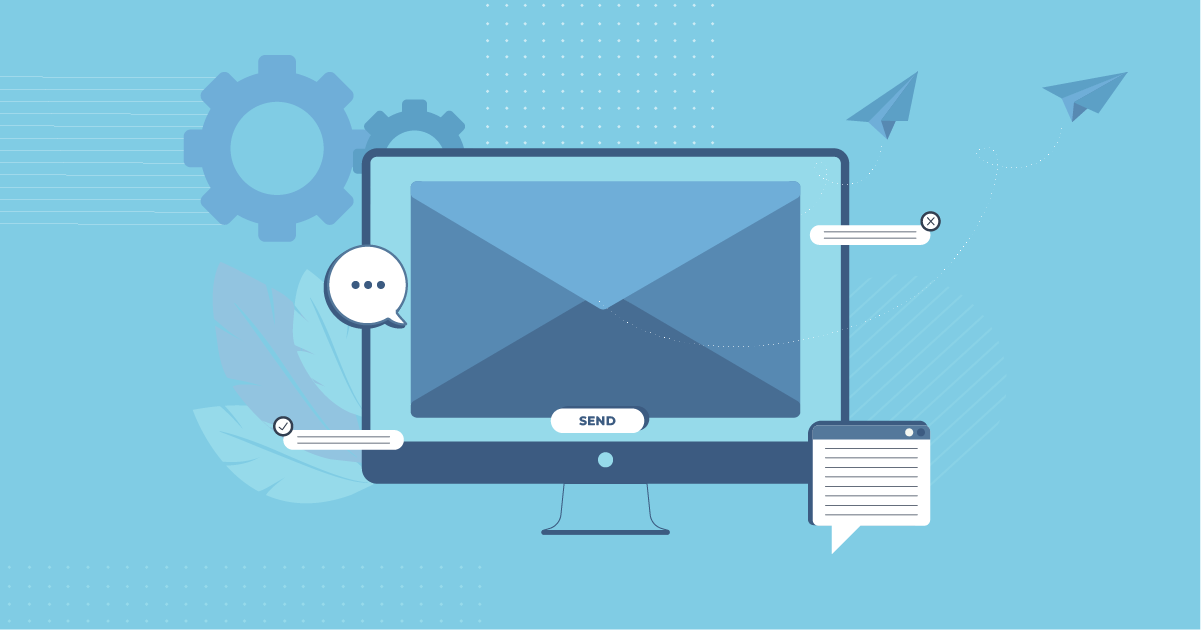
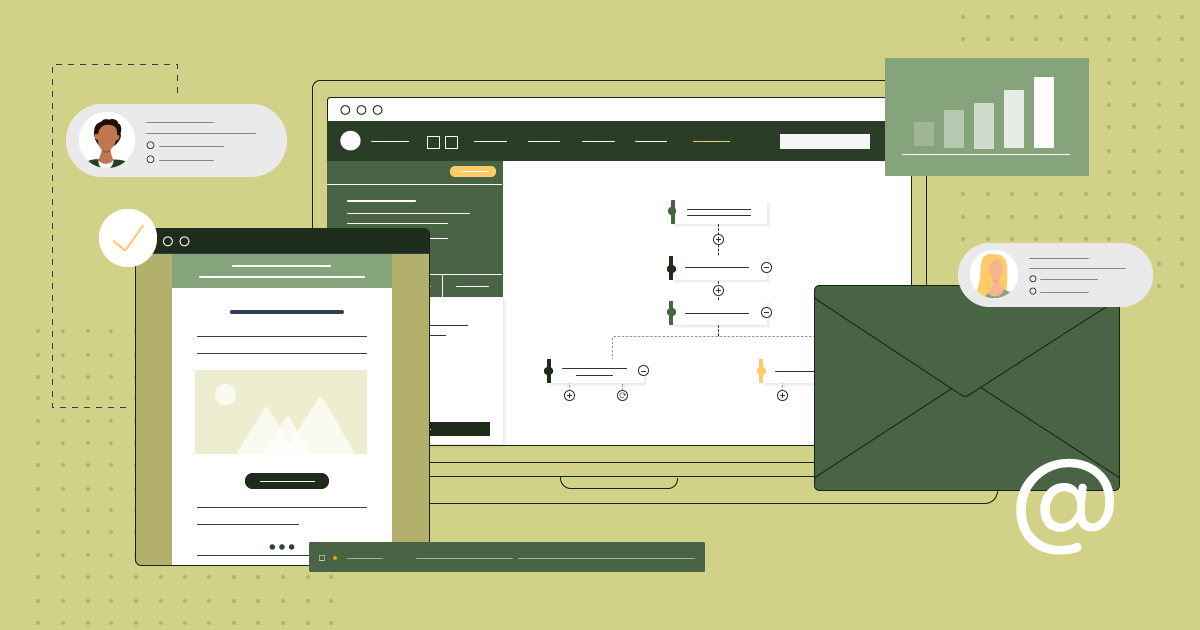
 Published by
Published by
